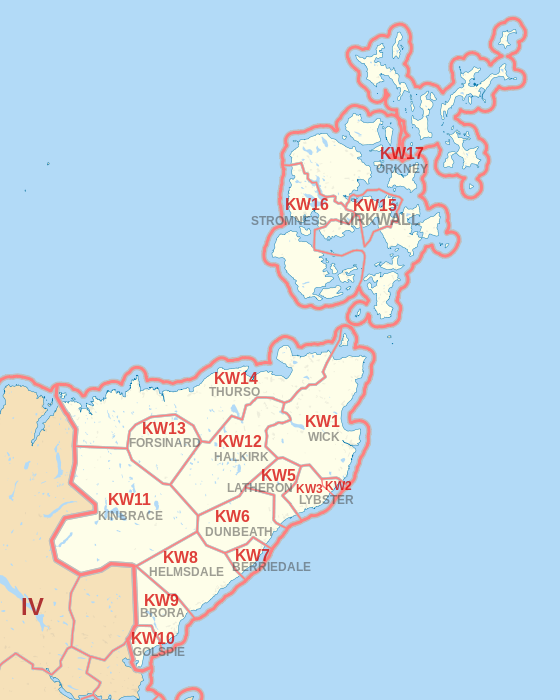KML is from Wikidata
Kirkwall | |
|---|---|
| Coordinates: 58°39′14″N3°17′20″W / 58.654°N 3.289°W | |
| Country | United Kingdom |
| Postcode area | KW |
| Postcode area name | Kirkwall |
| Post towns | 15 |
| Postcode districts | 16 |
| Postcode sectors | 22 |
| Postcodes (live) | 1,835 |
| Postcodes (total) | 2,103 |
| Statistics as at May 2020 [1] | |
The KW postcode area, also known as the Kirkwall postcode area, is a group of sixteen postcode districts in the far north of Scotland, within fifteen post towns. These cover Caithness (including Wick, Thurso, Halkirk, Berriedale, Dunbeath, Latheron and Lybster), east Sutherland (including Golspie, Brora, Helmsdale, Kinbrace and Forsinard) and the Orkney Islands.
Contents
Mail for the KW postcode area is processed at Inverness Mail Centre, along with mail for the IV and HS postcode areas.

